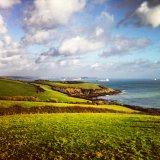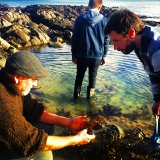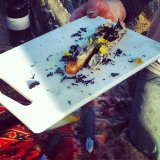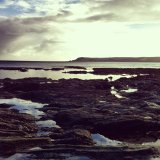Sustainability is a priority here at the beach. We are continually pushing the boundaries in an attempt to neutralise our impact on the environment and, wherever possible, to have a positive effect on our surroundings.
One example is our policy on sourcing fish. We have done our best to research the most sustainable options available, and have built our menu around seasonality, life cycles and an evolving understanding of local fish stocks.
One company we are lucky enough to work with is Wild Harbour. Based in Hayle just across St Ives Bay, Wild Harbour supply 100% sustainable fish from their own boat and other small Cornish fishing vessels. Each fish is traceable back to the fisherman who caught it, as Wild Harbour is part of the Southwest Handline Fishermen’s Association which operates a tagging scheme. The company is also commited to paying fishermen a fair price for their efforts.
Wild Harbour was the brain-child of Saul and Abi Astrinsky, who explained their relationship with Porthminster:
“The Porthminster Beach Cafe has been part of the journey for Wild Harbour right from the beginning – from before we existed actually! When Saul was fishing full time he used to drop Mick some Sea Bass from time to time and it was the enthusiasm of Mick and his team for the quality, freshness and most of all our sustainable roots, that made us think that perhaps Wild Harbour could become a reality.”
It’s fantastic to work with a local business who share our ethos so perfectly. Abi from Wild Harbour explained further:
“We believe that the sustainability and traceability of our fish is of the utmost importance. We only supply wild, sustainably caught fish from the local inshore fleet and every individual fish or shellfish is traceable back to the fisherman who caught it. We also believe that our handpicked, in shore fishermen are special! They keep their fish to such a high standard, that we choose to set a fair price for their fish and keep this throughout the year.”
Respecting the breeding seasons of certain species and relying on less intensive fishing methods means that our menu has to be adaptable to change. Daily specials allow us to make the most of a fresh haul, whilst we take species off the menu if stocks are low and therefore in danger of not being properly replenished.
Our Sea Bass, Mackerel, Pollock and several other species are supplied by Wild Harbour. We hope that by supporting the sustainable fishing industry, Cornwall’s fish stocks can be managed responsibly to meet the needs of locals and visitors, at home and in restaurants, to enjoy in years to come.







 This spring, you can learn more about what the chefs look for, where they find it and how they use it during two very special Forage & Feast days. In collaboration with ecologist and forager Caroline Davey of The Fat Hen, these courses will highlight the diversity of wild food available along the coast in springtime. Cookery demonstrations will show how Executive Chef Michael Smith uses this bounty in adventurous and innovative ways, and guests will enjoy a feast of fresh flavours in celebration of their day’s efforts.
This spring, you can learn more about what the chefs look for, where they find it and how they use it during two very special Forage & Feast days. In collaboration with ecologist and forager Caroline Davey of The Fat Hen, these courses will highlight the diversity of wild food available along the coast in springtime. Cookery demonstrations will show how Executive Chef Michael Smith uses this bounty in adventurous and innovative ways, and guests will enjoy a feast of fresh flavours in celebration of their day’s efforts.






















